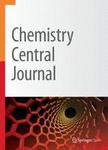版权所有:内蒙古大学图书馆 技术提供:维普资讯• 智图
内蒙古自治区呼和浩特市赛罕区大学西街235号 邮编: 010021

作者机构:Politecn Milan Dept Elect & Informat DEI I-20133 Milan Italy
出 版 物:《CHEMISTRY CENTRAL JOURNAL》 (化学中心杂志)
年 卷 期:2010年第4卷第s1期
页 面:S2-S2页
核心收录:
基 金:EU
主 题:Support Vector Machine Support Vector Machine Classifier Machine Learning Algorithm Support Vector Machine Model Ames Test
摘 要:Background: Mutagenicity is the capability of a substance to cause genetic mutations. This property is of high public concern because it has a close relationship with carcinogenicity and potentially with reproductive toxicity. Experimentally, mutagenicity can be assessed by the Ames test on Salmonella with an estimated experimental reproducibility of 85%;this intrinsic limitation of the in vitro test, along with the need for faster and cheaper alternatives, opens the road to other types of assessment methods, such as in silico structure-activity prediction models. A widely used method checks for the presence of known structural alerts for mutagenicity. However the presence of such alerts alone is not a definitive method to prove the mutagenicity of a compound towards Salmonella, since other parts of the molecule can influence and potentially change the classification. Hence statistically based methods will be proposed, with the final objective to obtain a cascade of modeling steps with custom-made properties, such as the reduction of false negatives. Results: A cascade model has been developed and validated on a large public set of molecular structures and their associated Salmonella mutagenicity outcome. The first step consists in the derivation of a statistical model and mutagenicity prediction, followed by further checks for specific structural alerts in the safe subset of the prediction outcome space. In terms of accuracy (i.e., overall correct predictions of both negative and positives), the obtained model approached the 85% reproducibility of the experimental mutagenicity Ames test. Conclusions: The model and the documentation for regulatory purposes are freely available on the CAESAR website. The input is simply a file of molecular structures and the output is the classification result.